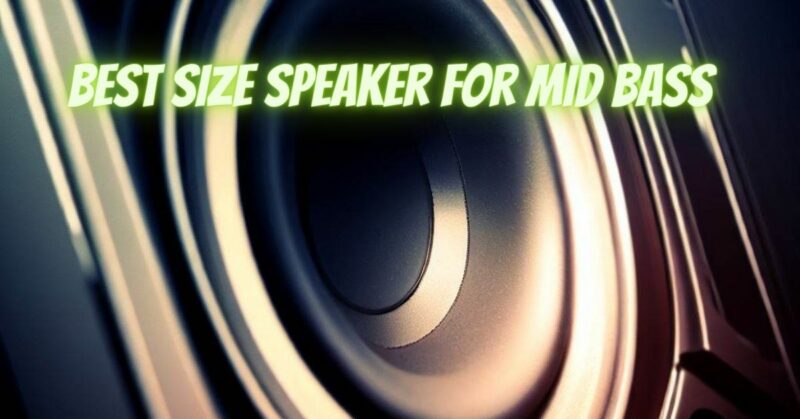When it comes to building a speaker system or upgrading your existing setup, choosing the right size speaker for mid-bass reproduction is crucial. The mid-bass range is responsible for delivering impactful and punchy bass frequencies that add depth and richness to your audio. In this article, we’ll explore the factors to consider when determining the best size speaker for mid-bass performance.
- Frequency Range: The mid-bass range typically covers frequencies between approximately 100 Hz to 500 Hz or slightly higher. To accurately reproduce these frequencies, the speaker should have the capability to handle them with precision. While the size of the speaker can influence its performance in the mid-bass range, it’s important to note that other factors such as driver design, materials, and cabinet construction also play significant roles.
- Driver Size: The size of the driver, usually the woofer, has an impact on the mid-bass performance. Larger drivers generally have more surface area and can move more air, resulting in greater bass output and potential for deeper bass extension. However, it’s important to strike a balance between driver size and overall system design to ensure cohesiveness across the entire frequency spectrum.
- Room Size: Consider the size of the room where the speakers will be placed. Larger rooms typically require speakers with larger drivers or multiple speakers to adequately fill the space with mid-bass frequencies. Smaller rooms may benefit from smaller speakers that can still deliver satisfying mid-bass performance without overpowering the space.
- System Configuration: The overall system configuration and speaker arrangement will also impact mid-bass performance. If you’re building a multi-way speaker system, consider the integration of mid-bass drivers with other drivers such as tweeters and mid-range drivers. Proper crossover design and integration are essential to ensure seamless transition between different frequency ranges and optimize mid-bass reproduction.
- Personal Preference: Ultimately, personal preference plays a significant role in determining the best size speaker for mid-bass. Some individuals prefer the visceral impact and presence of larger speakers with substantial mid-bass output, while others may prioritize a more balanced and controlled sound with smaller speakers that still provide satisfactory mid-bass performance. It’s important to consider your listening preferences and the type of music or content you enjoy to find the right balance.
Conclusion:
Finding the best size speaker for mid-bass reproduction involves considering multiple factors such as frequency range, driver size, room size, system configuration, and personal preference. There is no one-size-fits-all answer, as the ideal size will vary depending on individual preferences and specific requirements. It’s recommended to audition different speakers, consult with audio professionals, and carefully consider the aforementioned factors to make an informed decision.
Remember, the overall synergy and integration of the entire speaker system are crucial for achieving optimal mid-bass performance. A well-designed and properly integrated speaker system will ensure that the mid-bass frequencies are reproduced accurately, enhancing your audio experience with depth, impact, and musicality.


